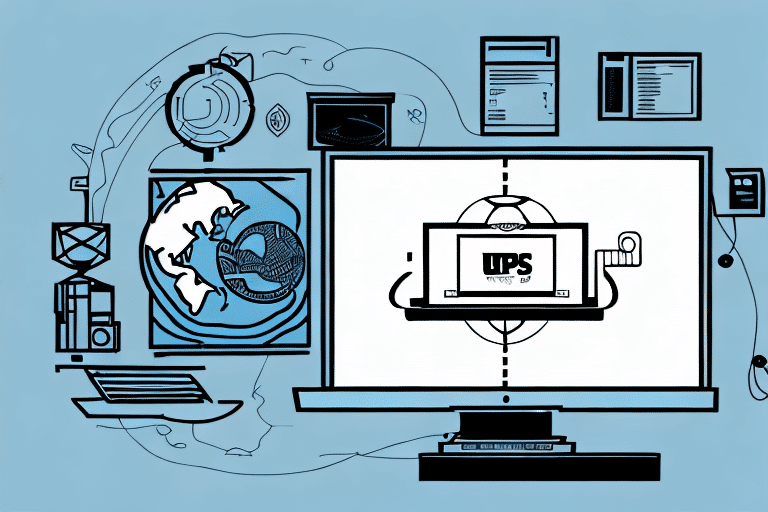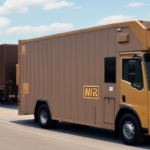Understanding UPS Shipping Rates: A Comprehensive Guide
Shipping rates are always a concern for businesses that rely on transportation services to move their goods. UPS, one of the leading global package delivery companies, offers a variety of options for getting packages from one place to another. However, navigating the complex rate structure can be challenging. In this comprehensive guide, we will explore everything you need to know about UPS shipping rates to help you make informed decisions about your shipping needs.
How UPS Calculates Shipping Rates Based on Package Weight and Dimensions
The cost of shipping with UPS is determined by several factors, with package weight and dimensions being among the most critical. UPS employs a system known as dimensional weight to calculate shipping costs. This method ensures that if a package is lightweight but occupies substantial space, especially on aircraft, the cost reflects the space the package takes up rather than its actual weight.
To determine the dimensional weight, UPS calculates the package's cubic size (length × width × height) and divides it by a dimensional weight factor. The resulting dimensional weight is then compared to the package's actual weight, and the higher of the two figures is used to determine the shipping cost.
It's important to note that the dimensional weight factor varies based on the shipping destination and the mode of transportation. For instance:
- Ground shipping within the United States: 166 cubic inches per pound
- Air shipping to international destinations: 139 cubic inches per pound
This variation means that packages shipped internationally by air may have a higher dimensional weight—and consequently, a higher shipping cost—even if they weigh the same as a package shipped domestically by ground.
The Impact of Distance and Delivery Speed on UPS Shipping Rates
Apart from weight and dimensions, distance and delivery speed significantly influence UPS shipping rates. Generally:
- The farther a package is shipped, the higher the cost.
- Faster delivery options, such as next-day air, are more expensive than standard ground shipping.
UPS offers a range of delivery speeds, from next-day air to ground shipping that can take up to a week or more. Additionally, UPS provides additional services that can impact shipping rates, including:
- Signature confirmation
- Insurance
- Special packaging requirements
During peak seasons, like the Christmas holidays, shipping rates may increase due to high demand. It's crucial to plan ahead and account for these potential rate fluctuations when budgeting for shipping costs.
How to Save Money on UPS Shipping Rates: Tips and Tricks
While UPS shipping rates can add up quickly, several strategies can help reduce costs:
- Negotiate Rates: Discuss better rates with UPS based on your shipping volume.
- Utilize Discounts: Take advantage of discounts for online shipping or specific packaging options.
- Consolidate Shipments: Combine multiple orders into a single package to lower overall costs.
- Optimize Package Size and Weight: Minimize the size and weight of packages to reduce shipping costs.
- Use Alternative Carriers: For non-urgent shipments, consider using USPS or FedEx for potentially lower rates.
- Leverage UPS Tools: Use UPS’s online tools to estimate and compare shipping costs before sending packages.
Additionally, setting up a UPS account and utilizing their automated shipping tools can streamline the shipping process, reducing both time and costs.
A Comparison of UPS Shipping Rates to Other Carriers
To secure the best shipping deal, it’s essential to compare UPS rates with those of other carriers like FedEx, USPS, and DHL. Consider the following when comparing:
- Reliability: UPS is renowned for its reliability and global reach.
- Pricing: While UPS is competitive, other carriers might offer better rates for specific services.
- Service Offerings: Different carriers excel in various areas, such as international shipping or expedited services.
For example, UPS may offer more affordable rates for large, heavy items due to their handling expertise, whereas FedEx or DHL might provide more cost-effective options for expedited shipping of smaller packages.
The Role of Insurance and Additional Services in UPS Shipping Rates
UPS provides a range of additional services that can affect the overall shipping cost. These include:
- Insurance
- Delivery confirmation
- Signature tracking
- Saturday delivery
- International shipping services
- Hazardous materials handling
When selecting these services, consider the following:
- Insurance: Essential for high-value shipments. UPS offers various coverage levels based on the declared value of the shipment. Be aware of the policy limitations and the claims process in case of loss or damage.
- Delivery Confirmation and Signature Tracking: Provide added security and assurance that the package reaches its intended recipient.
Incorporating these services can enhance shipment security and reliability but will increase the overall shipping costs. Evaluate the necessity of each service based on your business needs.
Common Mistakes to Avoid When Estimating UPS Shipping Rates
Accurate estimation of shipping costs is vital for managing your business’s expenses. Avoid these common mistakes:
- Ignoring Dimensional Weight: Failing to account for dimensional weight can lead to unexpected higher charges.
- Overlooking Additional Services and Fees: Services like insurance, signature confirmation, and special packaging can add to the cost.
- Poor Packaging: Improperly packed shipments may incur additional fees or lead to damage, increasing costs.
- Neglecting Discounts: Missing out on available discounts and promotions can result in higher shipping expenses.
By addressing these areas, businesses can achieve more accurate shipping cost estimates and better manage their logistics budgets.
Navigating the UPS Website to Get Accurate Shipping Rate Quotes
The UPS website offers robust tools to obtain accurate shipping rate quotes seamlessly. To get started:
- Enter Package Details: Provide the weight, dimensions, destination, and desired delivery speed.
- Review Estimated Costs: UPS will display an estimated shipping cost based on the provided information.
- Factor in Additional Services: Include any extra services like insurance or signature confirmation to get a comprehensive cost estimate.
Additional features of the UPS website include:
- Save Shipping Information: Store frequently used shipping details for quicker future quotes.
- Variety of Shipping Options: Choose from ground, air, and international shipping based on your needs and budget.
- Delivery Speed Selection: Select the appropriate delivery speed to align with your deadline requirements.
For more detailed guidance, refer to the UPS Rate Calculation Guide.
Understanding the Different Types of UPS Shipping Services Available
UPS offers a diverse range of shipping services tailored to various needs. Key services include:
- Next-Day Air: The fastest UPS shipping option, guaranteeing delivery by the next business day. Ideal for urgent shipments but comes at a premium cost.
- 2-Day Air: Ensures delivery within two business days, balancing speed and cost.
- 3-Day Select: Provides delivery within three business days, suitable for less urgent shipments.
- Ground Shipping: The most cost-effective option for non-urgent deliveries, with delivery times varying based on distance.
- International Shipping: Offers various options for global deliveries, accommodating different speeds and cost preferences.
Understanding the differences in speed, availability, and cost among these services is crucial for selecting the best option for your shipping requirements.
How to Negotiate Better UPS Shipping Rates for Your Business
If your business frequently ships with UPS, you may be eligible for discounted rates based on shipping volume. To negotiate better rates:
- Assess Your Shipping Volume: Determine your average monthly or yearly shipping volume to present to UPS.
- Contact a UPS Representative: Reach out to discuss your shipping needs and explore available discounts.
- Leverage Business Relationships: Building a strong relationship with UPS can lead to more favorable terms.
- Consider Long-Term Contracts: Entering into long-term agreements may provide additional bargaining power for rate reductions.
Securing better rates can significantly reduce your overall shipping expenses and enhance your business’s profitability.
The Pros and Cons of Using UPS for Your Shipping Needs
Choosing UPS as your shipping carrier comes with its set of advantages and potential drawbacks:
Pros
- Extensive Network: UPS has a global presence, ensuring reliable delivery to numerous destinations.
- Diverse Service Options: From expedited to economical shipping, UPS offers a wide range of services to meet varying needs.
- Advanced Tracking: Comprehensive tracking capabilities provide real-time updates on shipment status.
- Reputable Reliability: UPS is known for its dependable and timely deliveries.
Cons
- Higher Costs for Certain Services: Expedited shipping options can be more expensive compared to other carriers.
- Additional Fees: Services like insurance and signature confirmation can add to the overall shipping cost.
- Complex Rate Structures: Navigating UPS’s pricing tiers and additional fees can be challenging for some businesses.
Weighing these pros and cons can help determine if UPS aligns with your business’s shipping requirements and budget.
Factors That Affect International UPS Shipping Rates
International shipping with UPS involves additional complexities that can influence the overall cost. Key factors include:
- Tariffs and Customs Fees: Duties and taxes imposed by the destination country can affect total shipping costs.
- Shipping Distance: Longer distances typically result in higher shipping fees.
- Delivery Speed: Expedited international services are more costly than standard options.
- Package Type and Regulations: Certain items may incur extra fees or require special handling.
To optimize international shipping costs:
- Understand the import regulations and fees of the destination country.
- Choose appropriate shipping speeds based on urgency.
- Ensure packages comply with UPS’s international shipping guidelines to avoid additional charges.
Collaborating closely with UPS and utilizing their international shipping resources can help manage and reduce costs effectively.
Understanding the Fine Print: Additional Fees and Surcharges Included in UPS Shipping Rates
UPS shipping rates can be influenced by various additional fees and surcharges. Being aware of these can help prevent unexpected costs:
- Fuel Surcharges: Reflect fluctuations in fuel prices and are applied to most shipments.
- Residential Delivery Fees: Additional charges for delivering to residential addresses instead of commercial locations.
- Address Correction Charges: Fees incurred if the provided address is incomplete or incorrect.
- Saturday Delivery Fees: Extra costs for deliveries made on Saturdays.
- Oversize and Overweight Fees: Applied to packages that exceed standard size and weight limits.
To manage these costs:
- Carefully review the shipping terms to understand applicable fees.
- Ensure accurate and complete address information to avoid correction charges.
- Optimize package sizes and weights to stay within standard limits.
Understanding these additional costs is essential for accurate budgeting and cost management in your shipping operations.
How to Track Your Package After It’s Been Shipped with UPS
Once your package has been shipped with UPS, tracking its progress is straightforward:
- Obtain the Tracking Number: Provided at the time of shipment.
- Visit the UPS Tracking Page: Go to the UPS Tracking page.
- Enter the Tracking Number: Input the number in the tracking field to view the current status.
- Use the UPS Mobile App: Download the app for on-the-go tracking and real-time notifications.
Additional tracking features include:
- Email and Text Alerts: Receive updates on your shipment’s status directly to your inbox or mobile device.
- Detailed Tracking Information: Access comprehensive details about each stage of the shipment process.
Effective tracking ensures you remain informed about your package’s journey, allowing you to manage your business operations more efficiently.
With this comprehensive guide to UPS shipping rates, you should be able to make informed decisions about your shipping needs and keep your costs under control. Remember to carefully consider all factors when selecting your shipping options and take advantage of cost-saving strategies to maximize your savings.




















